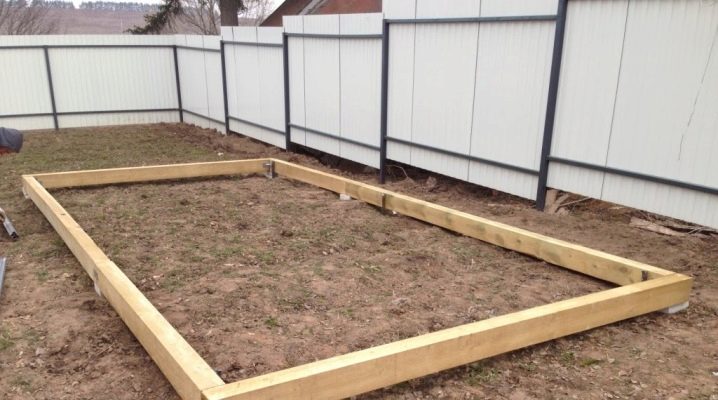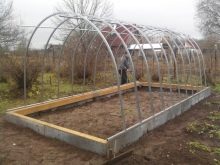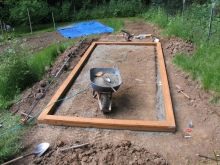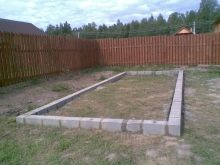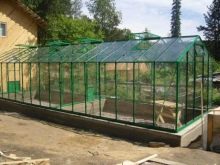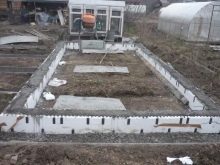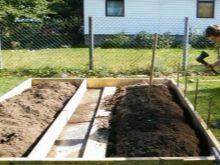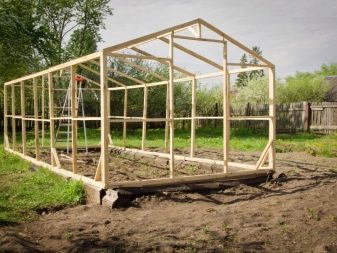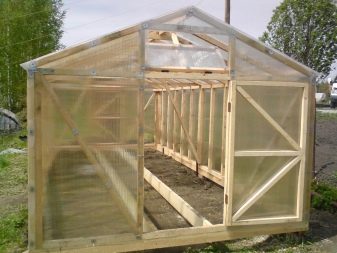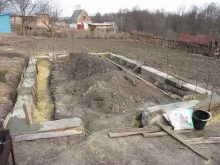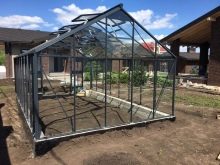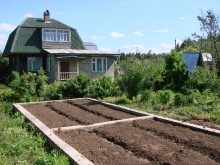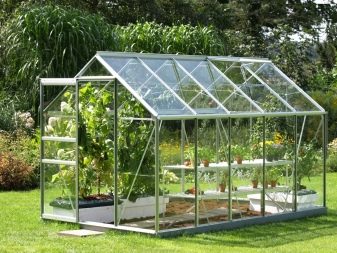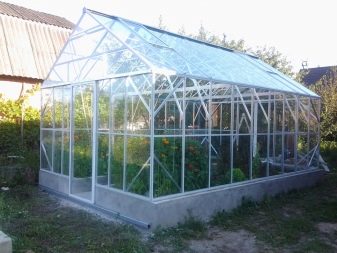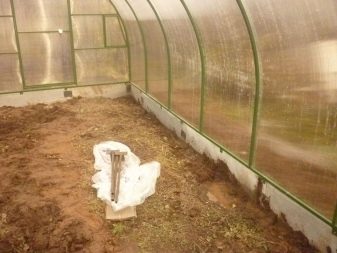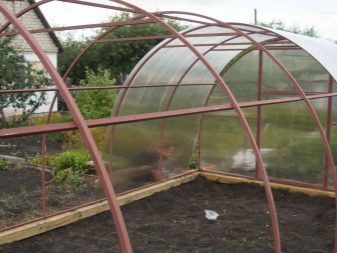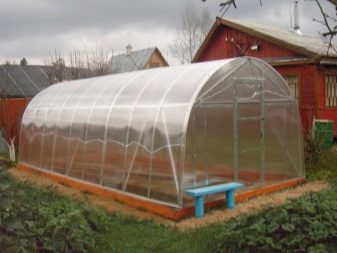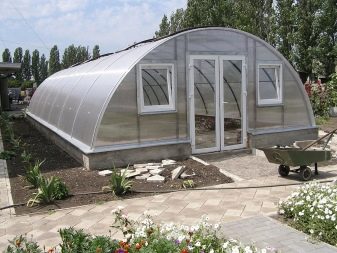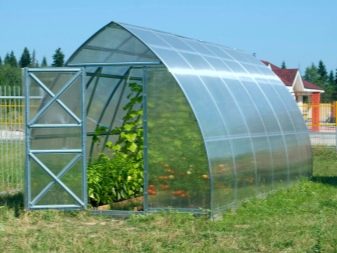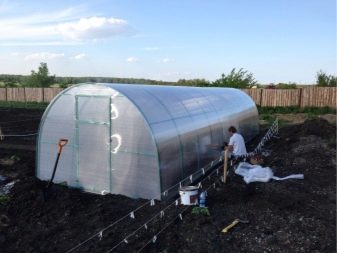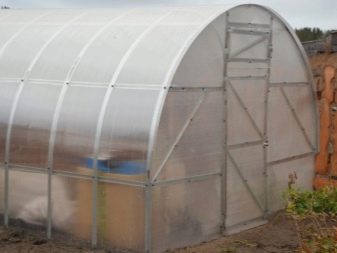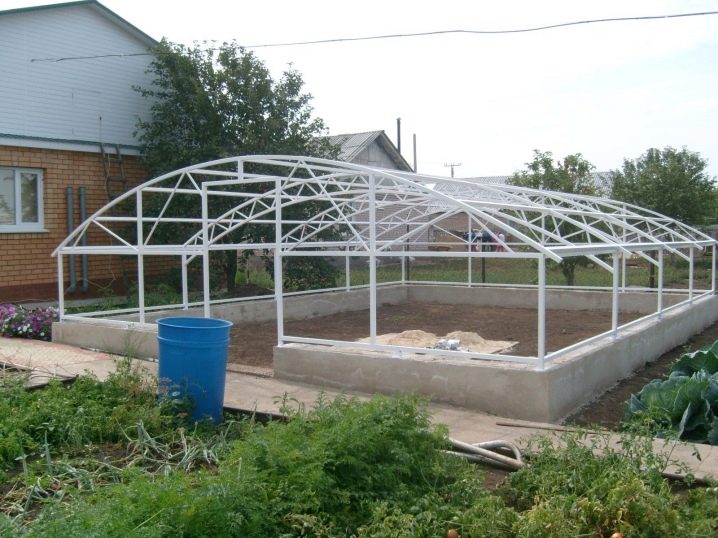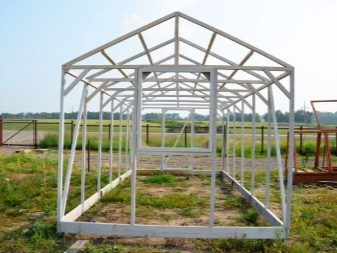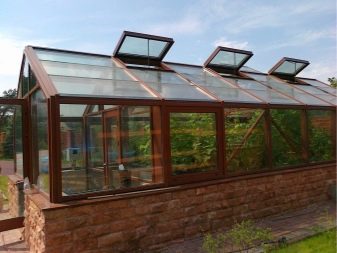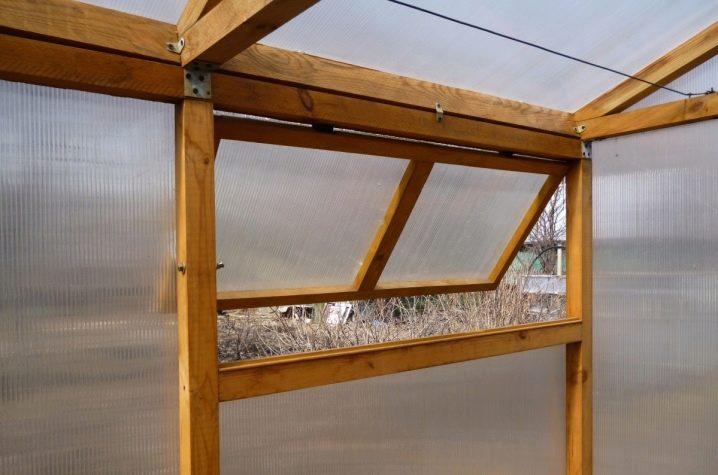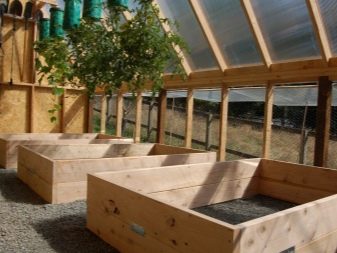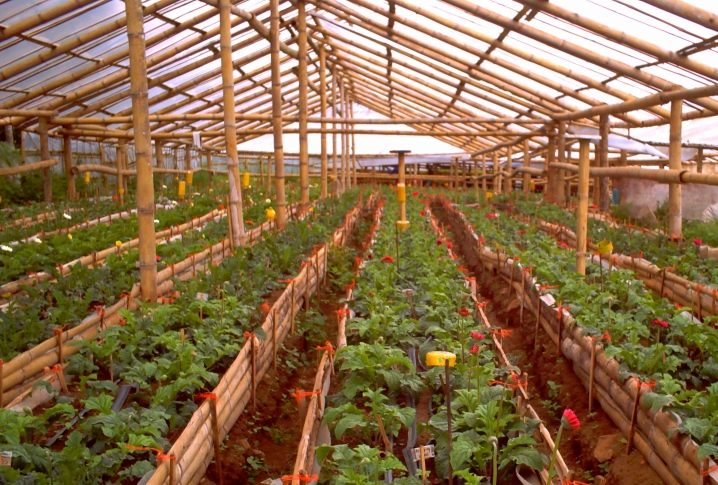The foundation for the greenhouse: how to do?
A greenhouse is one of the most effective ways of growing vegetables in greenhouses, and therefore such constructions can be found today in many private areas where there is a small piece of free land, while greenhouses can be warm and cold. The first type is adapted to the winter cold, and therefore plants can grow in them throughout the year. An important component of such a structure is the foundation, which perceives all external loads.
Special features
The base for the greenhouse is a kind of support on which the main structural elements are fixed. It is impossible to imagine such a structure without a foundation capable of extending the life of the structure several times.
Technically, these structures very often resemble the foundations of classic residential buildings. or small buildings, but only a few smaller ones.The use of grounds for greenhouses has many positive aspects. For example, using the foundation, the frame of the greenhouse is securely fixed to the ground, which does not allow the structure to move under the influence of wind or other external influences.
The foundation also increases the bearing strength of the frame. On such a base, you can already install more complex systems, while the presence of the base minimizes the destruction of the structure and does not allow to influence it from the outside.
If the greenhouse is raised above the ground, then this approach allows you to save more heat inside it - this way you can minimize the cost of heating the system.
The foundation is a barrier to the penetration of moles and other similar pests inside the building. This applies only to concrete and brick foundations that are buried in the soil. If only wooden timber is used as a support, then it will not save from rodents.
It should be noted that the foundation does not always protect - it can lead to cracks or distortions in the frame. This is due to the violation of the technology of construction of such structures.
Kinds
The foundation for a greenhouse is a support that will affect the quality of growth of all plants, therefore, when constructing it, the type of base must be correctly determined. Today for such purposes use several types of the bases:
- Wooden. It is difficult to call the construction of wood a foundation - technically it is a kind of support for the future frame. It is made of several bars, which are stacked around the perimeter of the structure. Some experts recommend to fix the wood on the columns of pipes or concrete. This design is fully portable, which makes it mobile and independent. The wooden foundation is easy to build, but the timber is not able to withstand external climatic influences and rots very quickly, regardless of whether it is processed or not.
- Concrete and brick. The base of such materials is a system of bricks, which are fastened together by a certain type of concrete. This type of foundation is distinguished by its low weight and relatively good strength. Also, the design can withstand physical activity quite well. But the material absorbs water quickly, so it keeps heat poorly.It is possible to correct this situation with the help of additional warming.
- Blocky. Some experts construct the foundation of the blocks, you can make it pretty quickly. But such facilities also poorly retain heat, which does not allow its use in cold periods of the year.
- Ribbon. One of the most complex and common foundations, it is constructed of stone and concrete. This structure is able to withstand high loads. Such foundations are durable and can be operated with constant exposure to water and temperature changes. But the design retains heat very poorly, and its construction requires certain skills.
- Pillar and pile. Both of these structures are similar, since they consist of vertical support elements located along the entire perimeter of the future foundation. The first type is constructed from sleepers, concrete posts or pipes, while it is important to choose the correct dimensions of the supports so that they can withstand considerable loads. Screw piles are used in conditions of heaving soil, which allows to obtain a stable system that can withstand the movement of the soil and its instability.This foundation is easy to build, but you need to finish it further to remove all the holes between the supports. But with the right approach, you can get a warm base that will be suitable for the installation of the greenhouse.
- Slab. As a foundation, solid slabs are used that completely cover the entire surface of the soil along the perimeter. This design very well prevents the penetration of rodents into the greenhouse. But the construction of such a foundation is expensive and therefore is used only for industrial-type greenhouses.
Selection under the greenhouse material
The foundation for the greenhouse is often selected depending on what kind of construction will be installed on it, and when the system will be operated. At the same time, experts recommend following a few simple tips:
- The foundation of wood able to withstand only a small weight. Therefore, it is used only for small plastic greenhouses, although wood is able to withstand metal structures.
- Concrete foundation It resists loads well - large greenhouses made of metal, glass, polycarbonate and plastic can be installed on it.This type of base is universal and can be used for almost any kind of soil.
- The foundation of foam blocks. This material well prevents the penetration of moisture, so this foundation is formed on wet soils, where it is necessary to protect crops from negative effects.
- The foundation of brick leaks moisture. When building it needs additional waterproofing. This base is suitable only for wood constructions coated with polymeric films.
Today, very often for the construction of greenhouses using polycarbonate. It is much lighter than glass, so almost all types of foundations can be used for such structures. But experts still recommend giving preference to bases made of concrete, brick or other solid mineral product.
Which is better?
Choosing a foundation for a greenhouse is not a difficult task. Today, several structures are used for such structures. At the same time, there are no universal foundations that can satisfy all the requirements of greenhouse owners.
Each of the grounds has its advantages. For example, wooden structures are light and quickly built.For their installation does not need the experience of the builder, because you just need to correctly position the beam around the perimeter. Concrete structures or foundations made of brick and stone have enhanced strength characteristics, but they do not always ensure the required level of thermal insulation.
Therefore, when choosing bases for greenhouses, it is important to take into account many parameters, among which the framework material and the period of growing plants are considered the main ones. If you plan to engage in the industrial production of vegetables, then only tape or monolithic systems will do. It is also important to analyze the responses of gardeners about various types of structures - this will allow you to choose the best foundation option depending on the type of soil and climatic conditions.
Dimensions
A greenhouse is a special building where you can grow cultivated plants. This is achieved through the use of transparent materials for the frame, as well as the retention of heat within the system. The dimensions of this building are not standard, as they depend only on the land and the technical capabilities of the owner.
Therefore, the dimensions of the foundation in most cases are selected individually.Many summer residents build greenhouses 4x6 or 4x8 m. But there are also more huge structures that need a reinforced base. Therefore, in the construction of such systems increase the width and depth of support.
Independent production
Installing the foundation for a greenhouse is a fairly simple operation that is easy to do with your own hands. But in order to obtain a durable construction, it is necessary to choose the right material for the base in accordance with the external load on it.
Development
The construction of any foundation begins with its design. This process consists of several sequential actions.
First, the calculation of all parameters of the greenhouse - this is important, as the dimensions of the foundation depend on the characteristics of the frame. All these values are selected individually and depend only on the needs of a particular person.
Then you need to choose a suitable place. Here you need to take into account the characteristics of the soil and the influence of the sun. It is desirable that the sun's rays fall inside the greenhouse during the day. Mounting in shaded areas is not allowed, as this will result in the need to install additional lighting.
Installation
Step-by-step instructions for the arrangement of the foundation involves several general provisions for all types of structures.
- Arrangement of formwork. The depth of the pit depends on the type of foundation selected. For example, for strip foundations, you need to dig a trench with a depth of more than 50 cm. Constructions of wood or brick can be mounted on a pillow, the thickness of which is 20-40 cm, depending on the load on it.
- Preparation of the base. This step involves leveling the soil, as well as its compaction using sand. Wooden foundations are complemented by a pillow, on which they are installed. Here it is important to form a solid lining for the main structure.
- Installation of the foundation. At this stage, the fixing of wooden bars or pouring concrete into the formwork. The technology of installation is selected individually.
What to process?
If it is decided to use wood as a material for the foundation, then it must be further processed.
The algorithm for working with such materials can be described by a specific sequence of actions.
- Alignment basics and laying waterproofing. The quality of such products using roofing material and other similar materials.It is important to properly align and compact the base.
- When the base is ready, the wood blocks should be covered with protective agents. It uses impregnation and primer. On the market there are many different antiseptics, solutions against rodents and insects, as well as liquids that prevent rapid decay.
- Installation of timber and protection of its upper part with another layer of roofing material.
Work related to wood processing is relatively simple and can be done independently. If a ribbon or brick foundation was built, then it practically does not need additional processing.
One of the methods of processing can be considered waterproofing. Today, for such purposes, use of ruberoid or liquid solutions based on bitumen or other petroleum products.
Useful tips and tricks
Installation of the foundation for greenhouses is mandatory, since the quality and service life of the entire structure depends on it. In the construction of such a design should follow a few simple tips that are listed below.
Be sure to control the geometric shape of the foundation.If the building is rectangular, then you need to measure the diagonals - they must be equal.
Soil structure and groundwater level need to be considered. If the ground is very mobile, then it is advisable to construct screw bases that will not depend on these factors.
The height of the foundation above the surface should be 1/3 of the total value.
A well-built foundation is half the success. Therefore, it is necessary to use only high-quality materials for greenhouse foundations and to observe installation technologies.
How to make the foundation for the greenhouse, see the next video.
